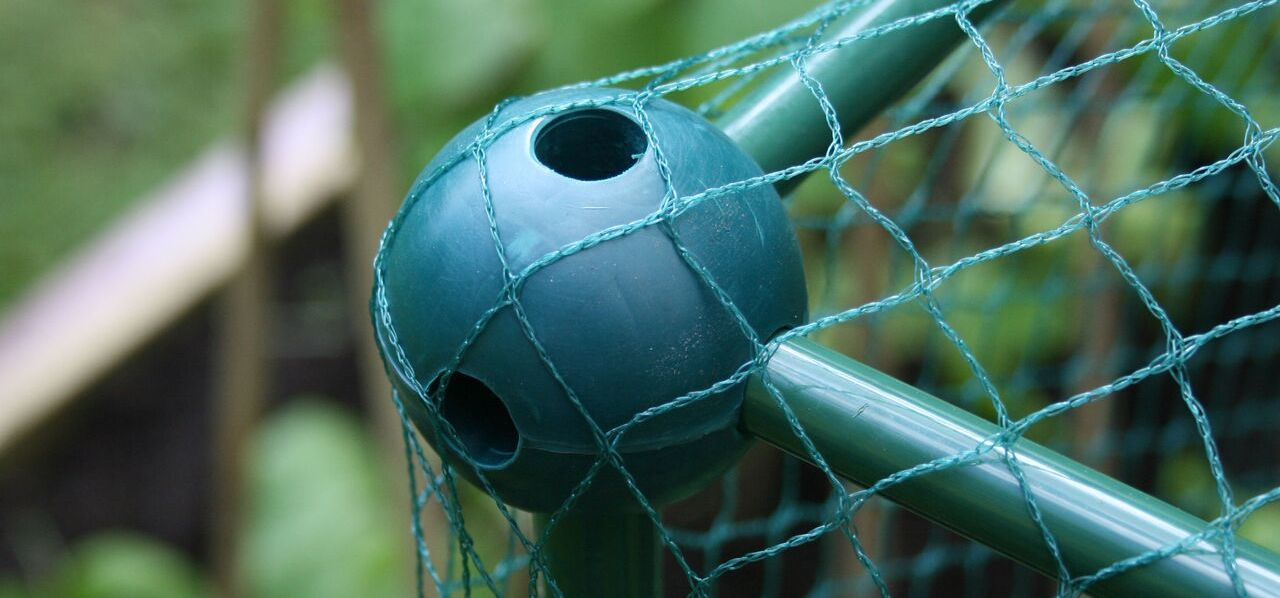How to protect fruit & veg with a fruit cage
Everything you need to know about fruit cages, including what they are used for, what crops to grow in them and how to choose the right fruit cage for your garden, grow patch or allotment.

What is a fruit cage?
Put simply, a fruit cage (sometimes called a crop cage) is a protective enclosure to stop your homegrown fruit and vegetables being eaten by a range of pesky garden critters. Unfortunately, your precious crops are as delicious to others as they are to you, with birds such as pigeons and blackbirds plus squirrels and rodents targeting your soft fruit, butterflies (especially cabbage whites) attacking your brassicas and celery and carrot fly finishing off - you've guessed it - your celery and carrots.
Browse our Fruit Cages Section for great deals on a huge range of fruit & vegetable cages and grow houses
What types of fruit cage are available?
There are a huge range of fruit cage options to cater for all home and allotment setups, ranging in size from fruit cages to cover single plants to much larger growing areas. However, the main types of fruit cage are:
Pop Up Fruit/Vegetable Cages
Pop up fruit & veg cages are ‘instant assembly’ garden frames and particularly useful for small to medium sized gardens. The main advantage of a pop up is the convenience – the only job is taking it out of the bag and pegging it down.
They are also light enough to be moved with ease – great if you want to vary the location of your growing area from year to year or protect multiple patches at different times during the growing season. Thirdly, they are great space savers, folding down into small storage bags when not in use. The main disadvantage is that they can’t be extended, which could be an issue if you’re planning on growing more fruit and veg in the future. Though you could always buy a second pop up…
Click here to see our pop up cages for strawberries, raspberries, carrots, cabbages and many other fruit & veg
Light Duty/Build Your Own Fruit Cages
Great for larger gardens with space to grow. These fruit cages usually come in the form of metal tubes and connectors that you assemble yourself, so require a bit more effort than a pop up, though typically no more than 10-15 minutes. Extending them to grow more crops is also a pretty straightforward process of adding extra tubes to the top or sides of your current setup.
They are usually sold with either bird netting, which is perfect for fruit as it has holes small enough to stop birds but large enough to let in pollinators such as bees, or butterfly net, with a smaller mesh of around 7mm to prevent cabbage white butterflies laying eggs on cabbages, broccoli and other brassicas.
See our Build-a-Cages and No-Frills Cages for a range of extendable modular fruit cages for all budgets
Heavy Duty/Walk In Cages
Best for large gardens with substantial fruit beds, Walk-In Cages are permanent or semi-permanent garden structures designed to stay up in all weather conditions.
As the name suggests, they are large enough to walk around inside, with plenty of space to grow pretty much any fruit and veg from strawberries and salad crops right up to raspberries, red currants, cape gooseberries and other tall fruiting bushes.
However, their size and the fact they use heavy duty materials make them the most expensive fruit cage choice, so if you’re new to 'grow your own' or only plan to grow a handful of crops you might want to consider the options above first.
How big is a fruit cage?
There are a huge range of fruit cage sizes, though typically they range in height from about 0.5m (for salad crops and low growing fruit such as strawberries) to 1.8m plus (which will be able to handle tall bushes such as raspberries and blackcurrants). Length/width is from 1m x 1m, with size limited only by the space available in your garden. If you can’t see the exact size you want, ask a specialist retailer – they’re more than likely able to make a fruit cage to your requirements.
Can't see the fruit cage you want? Contact us - we can make a cage to almost any size and specification
What can I grow in a fruit cage?
Fruit bushes including strawberries, raspberries, blackcurrants, redcurrants, white currants, blackberries, blueberries, gooseberries and dwarf cherries. Birds will eat almost any fruit given half the chance, so cover the cage with sturdy bird netting, which will let pollinators in but keep blackbirds, pigeons and their ilk away.
Vegetables, which in practice usually means members of the brassica family such as cabbages, calabrese, cauliflower, sprouts and broccoli. Cover your cage in butterfly netting to prevent the notorious cabbage white butterfly from laying eggs, as their caterpillar offspring will make quick work of your crops!
Salads. Bird netting is sufficient here, which will help stop pesky birds picking at the leaves













